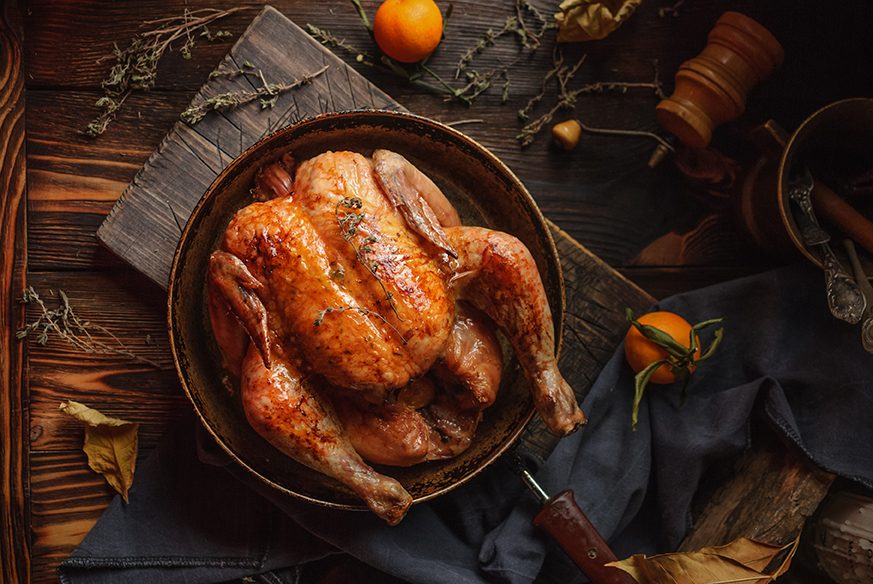Buttermilk Roast Chicken

Oakland’s Samin Nosrat, author of Salt, Fat, Acid, Heat (now a Netflix series), left her post as a food columnist for the New York Times this month to focus on a new cookbook. I have appreciated her recipes over the years, but none quite so much as her buttermilk brined roast chicken.
Buttermilk and chicken are the perfect pairing – my grandmother used to make a buttermilk fried chicken. Samin took this concept and used it to transform roast chicken. Simple, not messy, and uses only three ingredients: chicken, buttermilk, and salt.
Here is Samin’s recipe, which has now become a traditional winter’s Sunday dinner in our household.
From Samin Nosrat, New York Times, April 25, 2017.
Ingredients
- 1 whole chicken (less than 5 pounds – small enough to fit in a 1 gallon zip lock)
- 2 cups buttermilk (not low-fat)
- Kosher salt
Directions
The night before, take your chicken and season it with salt. Let it sit for half an hour.
Dissolve 2 tablespoons of kosher salt into two cups of buttermilk. Put the chicken into a gallon-size zip lock bag and pour the buttermilk brine over it. Seal the bag and massage the buttermilk all around the bird making sure some gets into the cavity. Place the bagged chicken into the refrigerator and let it brine for 12 – 24 hours. You can turn it every now and then to redistribute the brine.
Remove the chicken from the refrigerator an hour before cooking. Heat the oven to 425. Take the chicken out of the bag and wipe off most of the buttermilk (don’t worry about leaving a bit on).
Place the bird into a roasting pan (I use a cast iron pan) and place it into the hot oven. After 20 minutes, reduce the temperature to 400 degrees and continue roasting another ten minutes. Then, rotate the pan to allow even cooking, and continue roasting another 30 minutes or so – until the juices run clear.
Remove from the oven and allow to rest for ten to fifteen minutes before carving.
We like to reserve the juices to pour over the carved meat.
Save the carcass for soup.


